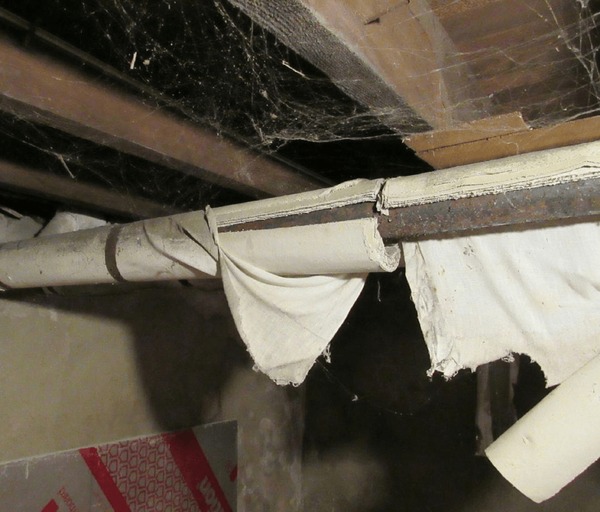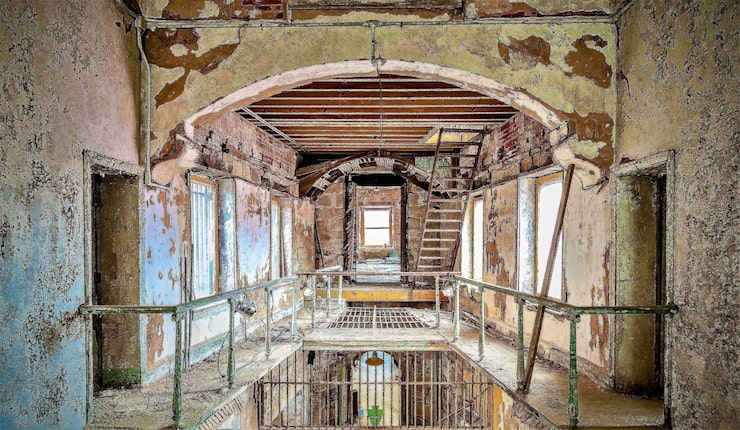Do you know that many houses contain materials that might contain asbestos? And what are some of the common household materials that can contain asbestos? This blog will look into them.
Asbestos was common in building materials in houses built before the 1980s. This changed after it became common knowledge that asbestos is not only harmful to the environment, but for the health of residents as well.
However, some of these materials remain even to this day. And that makes it imperative to know which are the exact materials that can most commonly contain asbestos. This post will explore some of those potential materials.
Before understanding why Asbestos is harmful to the environment and health, it is important to learn what it is.
So, what is Asbestos? Simply put, it is a name given to a group of fibrous materials resistant to corrosion and heat. And it is this reason that made it such a common content in household objects before the 1980s. Even now, it is used in insulation and fireproofing materials, as well as in wallboard materials.
Why is Asbestos Dangerous?
When products containing asbestos are disturbed, tiny fibers are released into the air, water, and soil. Asbestos fibers get trapped in your lungs for a long time. And over time, this accumulated asbestos fiber can lead to harmful effects in the long run.
These harmful effects can include tissue scarring and inflammation, affecting breathing, and leading to serious and long-term health problems. So, essentially, asbestos is dangerous from long-term continued exposure to it.
And the resulting diseases can include asbestosis, mesothelioma, and even lung cancer.
Most Common Household Materials That Could Contain Asbestos
Now that the basic idea of what makes asbestos dangerous, especially when ingested over the long run, let’s talk about the most common household materials that can lead to residents getting exposed to asbestos.
1. Popcorn Ceilings
One of the most commonly observed remnants from the construction era from before the 1980s, popcorn ceilings often contain asbestos.
The asbestos observed in popcorn ceilings is referred to as chrysotile asbestos. This type of asbestos is also called white asbestos. It is a known human carcinogen, while also being one of the most common forms of asbestos.
It is such a material that can be responsible for some concerning illnesses, such as lung cancer, laryngeal cancer, or even cancer of the pharynx, stomach, and ovaries. Chrysotile exposure can even lead to colorectal cancer.
The most common scenarios of exposure to chrysotile in the case of popcorn ceilings can be during scraping or painting.
2. Vinyl Floor Tiles and Adhesives
From the 1950s to the 1980s, 9×9 or 12×12 vinyl floor tiles were extremely common. And these floor tiles contain a significant amount of asbestos, typically consisting of asbestos in 10-25% ranges.
Many adhesives commonly used in manufacturing earlier than the 1980s had a significant asbestos content percentage. Backing, a reinforcing layer on paint, and mastic, a thick, putty-like substance used in sealing and insulation in construction, may contain asbestos.
In both these cases, abrasion between fragments and broken remnants leads to asbestos exposure. Hence, when inhaled over a long period of time, this asbestos can not only lead to potential health complications but also major health risks in the long run.
3. Insulation
Insulation materials in attics, ceilings, walls, and basements in residential and commercial constructions (constructed between 1866-1978) are a major common source of asbestos exposure.
The types of insulation that can be common include block, loose fill, spray-on, and wrap. While regulations have limited its use in modern buildings. But it is commonly observed in older constructions.
The asbestos content can vary from one type of insulation to another. Some types of insulation, like the Limpet insulation, are said to contain 85% while pipe insulation asbestos content can range between 15 to 40%.
4. Cement Sheeting
This is one of the asbestos-containing household materials still used to this day. Cement sheets are used for roofing, as well as in the construction of wallboards. A reason why this is still commonly used is that the fibrous asbestos cement is more durable than drywall and is much easier to work with when compared to concrete.
And manufacturing with such sheets can lead to exposure to asbestos. In a 2022 study of asbestos cement sheet factories across Vietnam, 52.4% of the samples taken showed the presence of asbestos dust in the air.
5. Roofing Materials
Asbestos-containing roofing materials are commonly used because of their durability. However, it is this durability that makes them such double-edged swords.
They can be extremely dangerous when removed or in a deteriorated condition. It is at those times that they raise the level of asbestos particles in the air around them, with a high potential for long-term exposure.
In older roofing materials, such as shingles, the asbestos content is often recorded to be higher. And this is especially the case in structures built in the early 1980s. Shingles were first manufactured with asbestos for high fire resistance and durability. However, when they deteriorate, they can release mineral fibers in the air.
6. Boiler & Furnace Insulation
Boiler and furnace insulation can consist of significant amounts of asbestos, where the asbestos content can be potentially variable. It can start at small percentages, such as 6% and get up to a higher percentage, such as 90%.
And no matter the percentage, they can release fibers over time, or can lead to fibers being released in the air when particles are scraped off during repairs. And these are commonly present in houses built before the late 1970s, often being mixed with calcium silicate and magnesium carbonate.
7. Old HVAC Duct Tape
Old HVAC duct tapes, available in constructions from the mid-1950s to the early 1980s, contain asbestos. However, they do not inherently pose a health risk unless exposed to routine contact or there is any damage in the piping material.
To identify these duct tapes, they are generally thicker than modern duct tapes, and are usually white or silver-grey in colour. They are known to contain approximately 35-65% chrysotile asbestos.
Again, they are not inherently causing asbestos exposure, unless they are degrading and flaking off with time, or are disturbed due to repairs.
8. Window Putty & Caulking
Asbestos can be found in the window putty of older wooden windows made before the 1980s. And it was added to make the material more fire-resistant and to add to its durability. Much like the previous material discussed, window putty is also not dangerous unless the putty is damaged. When damaged, they release harmful and invisible fibers into the air.
Similarly, in some older caulking compounds, asbestos can be found, especially in buildings constructed before 1980. They have been observed to have asbestos content up to 25%. These asbestos fibers are released in the air when the caulk is damaged, leading to the possibility of severe respiratory disorders.
9. Interior Wall Paint & Patching Compounds
In interior wall paint in the buildings from 1945 to 1980, especially in walls with textured finishes, asbestos-laden paint was generally used for increased durability and strength.
The paint and patching compounds, despite being reinforced with asbestos, are not harmful in their intact stages. Only when they are in a crumbled state, such as when peeling off and chipping away, do they release asbestos in small levels, but it can be harmful when inhaled over a long period of time.
10. Fireplaces, Wood Stoves & Fireproofing Panels
Fireproof panels, heat shields, and hearth pads in buildings from before the 1980s often contain asbestos board, especially applied for increased fire resistance. The asbestos here can be attributed to fireproofing the area and avoiding fire damage.
And since the fire is essentially damaging these panels regularly, exposure to the asbestos here can be extremely dangerous. The asbestos, when in the air, can reach your lungs and stay there, creating long-term respiratory disorders.
Recap of Common Household Materials and Their Asbestos Content
So, there are common household materials that can be stated to have asbestos content. And this asbestos, when exposed to, can lead to severe respiratory disorders and even long-term illnesses. So, let’s recap some of these household materials with the following chart:
| Material Type | Typical Time Range | Likelihood of Asbestos Content | Risk when Disturbed |
|---|---|---|---|
| Popcorn Ceiling | 1950s–1980s | Common | High |
| Vinyl Floor Tiles | 1950s–1980s | Highly Likely | High |
| Vermiculite Insulation | Pre-1990 | Very Probable | Very High |
| Cement Siding | 1920s–1980s | Often | Medium |
| Roofing Shingles/Felt | Pre-1990 | Common | High |
| Furnace & Boiler Insulation | Pre-1980 | Common | Medium |
| HVAC Duct Tape | Pre-1985 | Likely | Medium |
| Window Putty | Pre-1980 | Possible | Low to Medium |
| Joint Compound | Pre-1978 | Common | Medium |
| Fireplace Panels | Pre-1990 | Likely | High |
Table: Asbestos Content in Common Household Materials
Own an Old House? Get it Tested For Asbestos
Has your house been constructed in the 1980s or earlier? It may be possible that it contains household materials that have asbestos in them. No need to worry. Just do not try to remedy it on your own. You need to call an expert. So, contact us, and our experts will offer you the help you need by providing an expert-level asbestos test!
Frequently Asked Questions
Do I Need an Asbestos Survey for My House?
If your house is built before the 1980s, it is safe to get an asbestos test performed for your house.
Do I Need a Certificate of Asbestos Testing?
Once asbestos testing has been performed, the professional testers will provide you with a certification. It can be used to start working on the asbestos treatment.
Can I Identify Asbestos on My Own?
It is better if you leave the asbestos identification to experts. As, doing it on your own can involve trial and error, leading to the possibility of exposure.
What Should I Do When I Am Exposed to Asbestos?
Ideally, you visit a doctor as soon as possible. You will be safe if it’s caught in the earlier stages of exposure.





